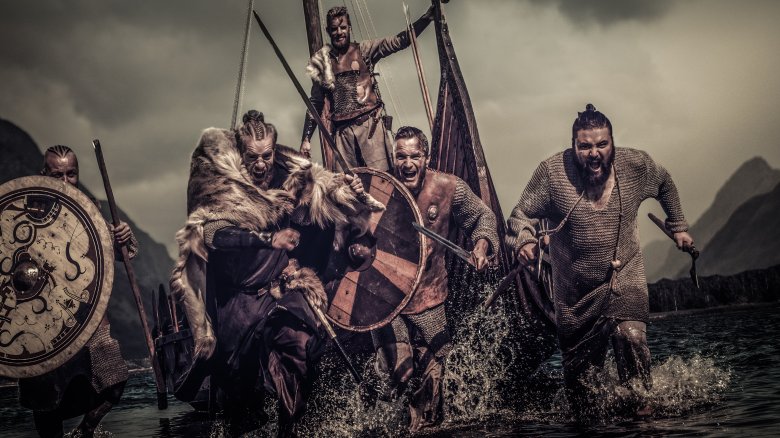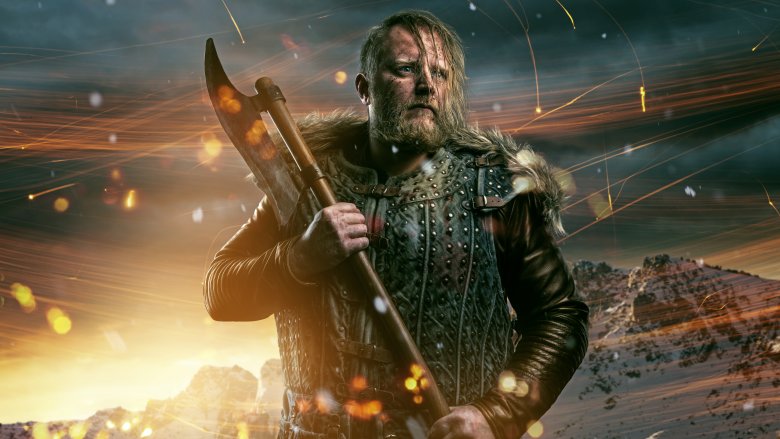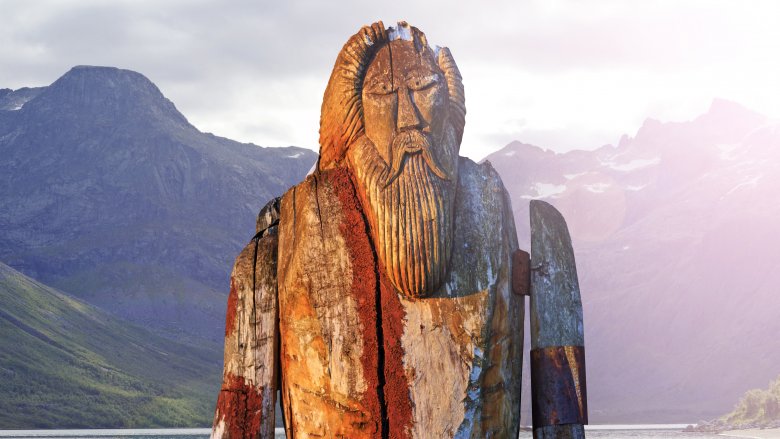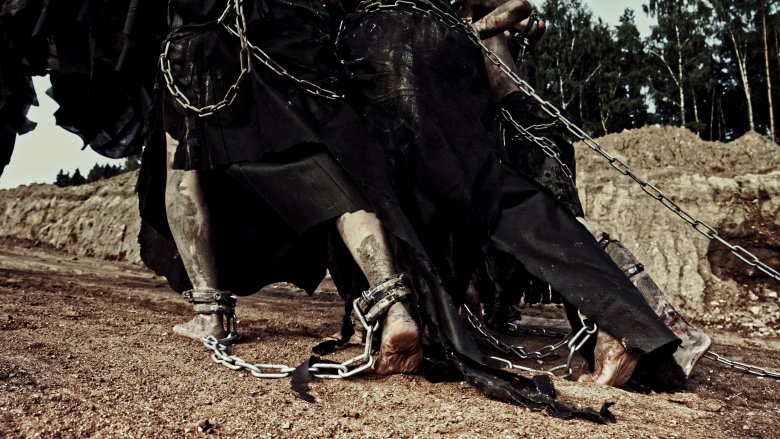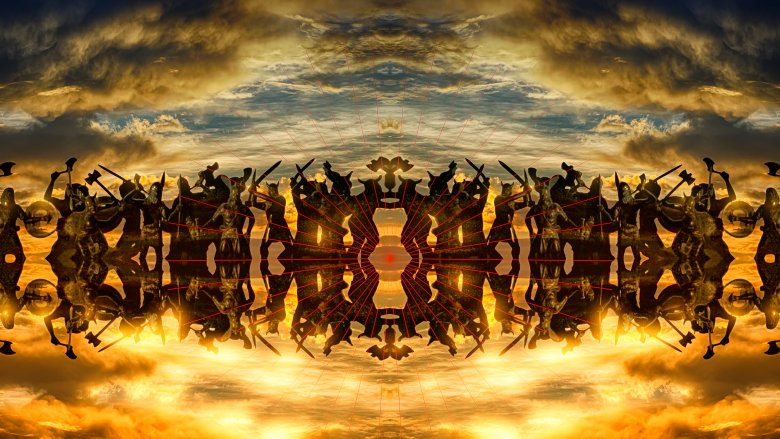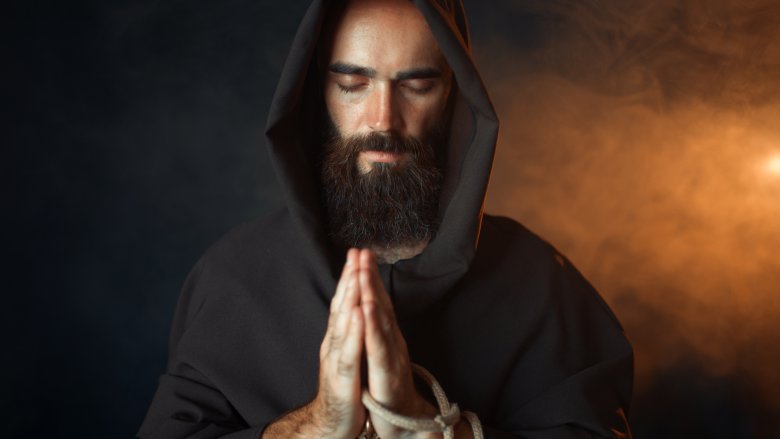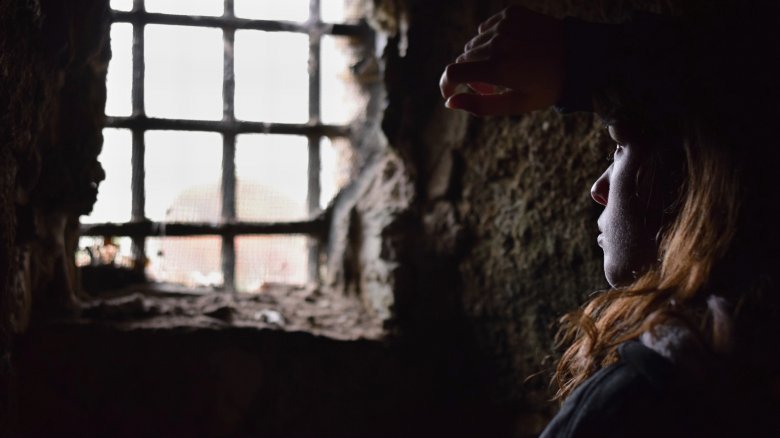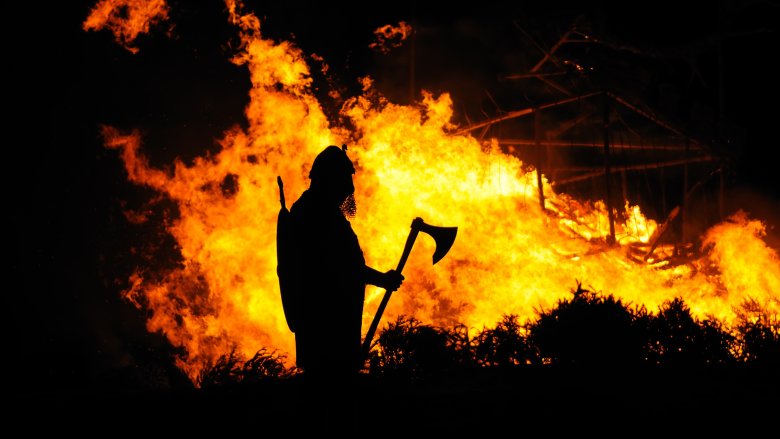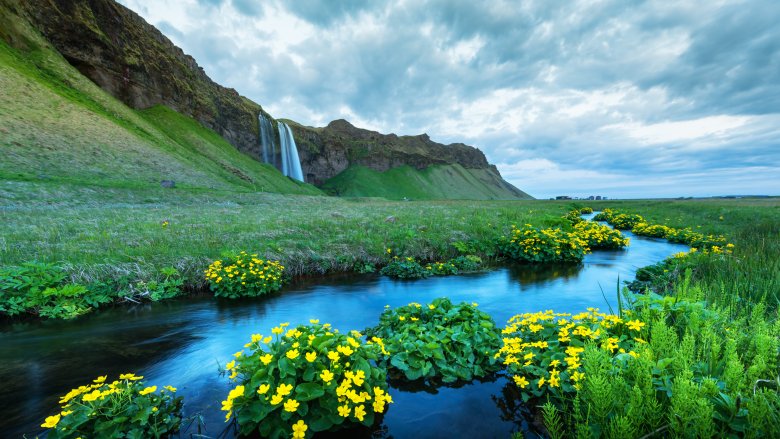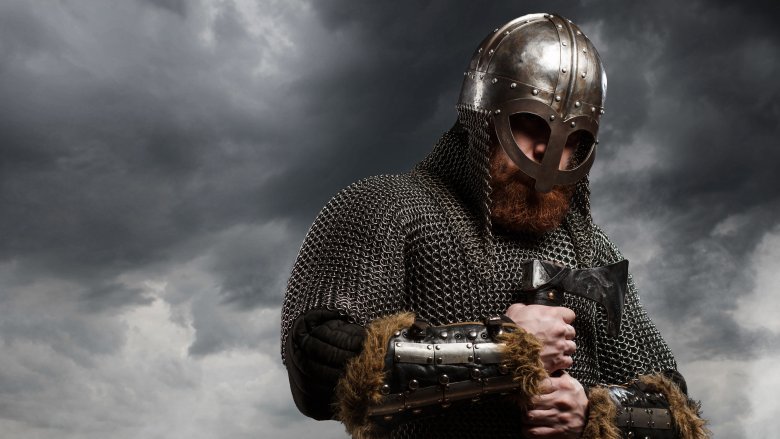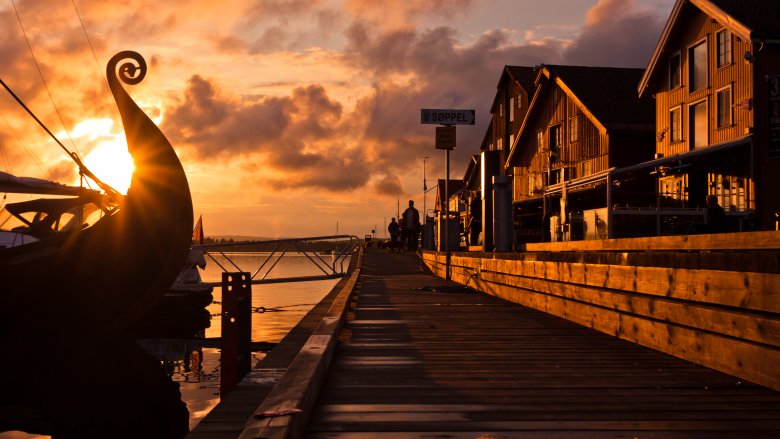The Most Disturbing Thing About Viking Raids Isn't What You Think
Throughout history, there have been groups who have struck fear into the hearts of those who heard their name ... and those who saw them coming. The Vikings were one of those peoples, renowned in their own time for their brutality and the devastation their longboats brought.
They first landed on British shores in 789, and according to the BBC, the people of Wessex first extended the hand of cautious peace. They sent a reeve — a local magistrate — to meet them, and he was immediately killed. That pretty much set the tone for the decades of Viking incursions that would follow, and when they returned to sack Lindisfarne on June 8, 793, there were no doubts about just what these strangers from a strange land wanted.
That first raid was so brutal and so bloody that the date went down in history, and when word spread across the known world, monks from as far away as Germany sent long letters of condolences ... that also claimed the raids were a sign the people of Lindisfarne were living a sinful life. Viking raids may not have been a punishment delivered by an angry deity, but one thing is for certain — the worst part probably wasn't what most people think.
Fates worse than death
Dying in the middle of a Viking raid was brutal and bloody, but for the most part, it was quick. The National Museum of Denmark says that early Viking raids were relatively small, extremely brutal, and were over very quickly. It wasn't until the ninth century that they got organized and started coordinating larger groups and expeditions to head out during what was essentially raiding season (Viking raids and their return home was dependent on the seasons — spring winds blew predominantly east-to-west, pushing their ships toward Britain, and autumn winds blew west-to-east, carrying them home).
The BBC describes Viking raids as, for the most part, "hit-and-run affairs," and they also note that really, Viking raids weren't anything people weren't used to already. It was the eighth century when the Vikings appeared in Britain, after all, and day-to-day life was already filled with everything from massive, large-scale battles to skirmishes between rival families and towns. Heck, there was a decent chance of dying or at least getting severely injured just playing medieval games, like mob football. It wasn't an easy time to live, and the Vikings were just one more headache ... one that happened to kill quickly, then leave.
It was the survivors that had it worse.
Agents of the devil ... or of a wrathful God
According to the National Museum of Denmark, monasteries and churches were always favorite targets. For the rest of the world, any group who would defile sacred places and murder God's servants was nothing short of wicked. Remember, too, that this was a time when religion was at the very center of life for many towns and people — and that made the Vikings' disrespect of God's domain even worse. Anglo-Saxon chronicles describe Vikings as "wild heathens [who] trampled upon saints' bones and destroyed God's house." That's some powerful imagery.
Historians know Vikings looted many of the monasteries and churches they raided, even taking things like ornate reliquaries once used to hold sacred saints' relics (via Irish Archaeology). That would have been unthinkable.
Medieval people struggled to discern the Vikings' motivations, and many came to the conclusion they were the manifestation of God's wrath (via The Ancient History Encyclopedia). Scribes and monks lamented the violence and crime they saw in the world around them and wrote that the Vikings had been sent to deliver retribution on the morally corrupt people of the world. Others spoke of omens — great lightning storms, famine, and even dragons — that heralded the coming of the Vikings. It had to be a terrible time to believe that the God everyone worshiped was so suddenly and violently angry His most brutal hordes were descending on His subjects ... faithless and faithful alike.
So, now you're a Viking slave
Viking raids weren't just about looting treasures and killing, they were also about reinforcing a vital part of the Viking economy: slavery. According to the National Museum of Denmark, most Viking slaves were taken from the British Isles and Eastern Europe. Occasionally, native Vikings who committed crimes at home were also reduced to the status of slave. While there's not a lot of contemporary evidence regarding what kind of lives Viking slaves lived, archaeologists have been able to piece together some pretty awful details.
Thousands of people could be enslaved in a single raid, says National Geographic, and some were sold to the Vikings' countrymen, who stayed at home to work the fields. Wool was a huge industry, as it was needed for the ships' sails, and archaeological evidence suggests many slaves ended up laboring on huge plantations. Ancient poems suggest they were given names like Bastard, Stumpy, and Stinker, and that when they died, they were left "as food for the dogs and the birds."
Slaves had no rights, generally lived with the animals, and could be used and abused by masters as they saw fit. For some idea of how much — or little — a human life was valued, consider this: The National Museum of Denmark says Viking trade records show a female slave was worth the same as a cow and an ox, while four male slaves had the same worth as a full suit of chainmail or two horses.
Eternal condemnation
Say a slave is sold to someone back home. There's no doubt that every other day of this poor soul's life is going to be filled with fear, starvation, abuse, and back-breaking labor ... but Viking beliefs held that it wasn't just the rest of a slave's life that was going to be hard. The afterlife wouldn't be much better.
ScienceNordic says researchers have found numerous Viking burial sites where both men and women were interred with grave goods. The idea of grave goods is that they're offerings the deceased could take into the afterlife (via History), and they're commonly things like weapons and jewelry. But many Vikings share their graves with other bodies — bodies that show signs of malnourishment, injuries, and a brutal death. Those are the slaves, sacrificed and buried with their masters so they can serve them for eternity in the afterlife, too.
It gets worse. Almost every Viking slave burial site has been different, and that's led archaeologists to a terrifying conclusion. They believe part of the burial ritual was the recreation of important events from the deceased's life, with the slave standing in for the dead man. Did the deceased lose a limb? Suffer some other catastrophic injury? Get all their teeth knocked out? Their skull cracked open? Guess who had to recreate all that before they were sacrificed and tossed in the ground.
You definitely didn't want to be a monk
Historian Mary Valente has made a compelling — and disturbing — argument (via Medievalists) when it comes to just what else Vikings were looking for when they raided the monasteries of the Britain and Ireland. She says they were looking to capture — not kill — monks for a very specific reason.
Buried in writings and biographies from the era are mentions of a huge number of slaves being transported from Western Europe, through Italy, and finally to Byzantium and the Middle East. Many weren't destined for the fields. Instead, they were put to work as teachers, guards, and even harem servants. Those roles were important, because there were a few requirements these slaves needed to fill: They needed to be literate, they needed to be educated, and they needed to be eunuchs.
Valente argues many of the monks, scribes, and acolytes taken from monasteries during Viking raids were young men who had the first few requirements covered, and when they were shipped off to Italy, they were castrated to fulfill that last one. Throughout the era of the Vikings, demand for these eunuch slaves rose steadily, and there's a good chance many of the men who didn't die in Viking raids were wishing they had ... right around the time they were taken to Venice for castration.
A match made in heaven?
Historians have been trying to figure out for a long time just why Vikings started raiding, and one still-popular theory was suggested around 1,000 years ago by Dudo of St. Quentin (via LiveScience). The basics are this: Vikings practiced polygyny, which is the idea a man could not only take multiple wives, but also keep concubines. The more powerful the man, the more women he had. To each his own, right? Well, that's the problem — so many powerful Vikings were taking so many wives, that each man didn't have his own.
Research suggests it was the large numbers of unmarried Viking men that helped drive not just raiding parties but the taking of female captives. There's a good chance those female captives were forced to return home with their Viking bachelors, where they would be put to work as domestic slaves and child-bearing concubines.
Live Science also says these unfortunate women were sometimes seen primarily as sex slaves, and when they did have children, they could see one of two things happen to them. They could either be acknowledged as official children of their father, or they could be forced into a life of slavery themselves. Medievalists adds a footnote that's just as terrible: If a man got another man's female slave pregnant, his only punishment was to be responsible for her until the baby was born and she was once again "strong enough to carry two pails of water from the well."
So much torture
According to The Postgrad Chronicles, there's a lot of lore about Viking torture methods that walks the line between fact and fiction. It's unclear just how fictionalized some contemporary writings about the Vikings are, but the legends are a testament to how creative they seem to have been when it came time to torture those who crossed them.
First, there's the Blood Eagle. It's been described as the fate of several Vikings, but just how widely it was practiced — and indeed, if it ever was — is still up for debate. It involves carving the shape of an eagle into the victim's back, then cutting the ribs away from the spine and pulling out the lungs so they look like an eagle's wings.
There's also another sort of torture-turned-execution method described in Njals saga. After the Battle of Clontarf, Ulf Hraeda reportedly visited some ungodly amount of pain onto a fellow Viking named Brodir in retribution for killing Brian Boru. Ulf, it was said, sliced open a bit of Brodir, pulled out some intestine, then ordered him to walk around and around a tree, pulling out the rest of his innards as he walked. Fictional? Hopefully.
But a third torture method — which the victims survived — seems to be very real. It involved cutting holes through the victims' ankles behind their Achilles' tendons, then running ropes through the holes and stringing them upside-down. Death isn't looking so bad, is it?
The mass deforestation of Iceland
Sometimes, the Vikings stuck around, like they did in Iceland. When groups of Vikings first set foot on Iceland's shores and decided to make it their home, they destroyed the country's forests. Trees were turned into buildings, heat, and charcoal for forges, while the land was used for planting crops and grazing animals. Within a few hundred years, The New York Times says, Iceland was left with a landscape that was almost entirely treeless.
That was fine for the Vikings, but in the 21st century the repercussions have been devastating. With no trees to secure the soil against Iceland's brutal winds, erosion is a major problem. Their soil — which is made up of a large percentage of volcanic rock and ash — blows away with a force that could strip the paint off cars. It's made farming impossible, grazing land scarce, sandstorms a way of life, and it's even impacting Iceland's ability to regulate their emissions. With no trees to absorb carbon dioxide, they're playing a major role in climate change.
Iceland has been trying to reestablish their forests since just after 1882, when a devastating sandstorm buried much of Gunnarsholt, killed hundreds of livestock animals, and completely filled in an entire lake. But even though they've planted millions and millions of trees, Iceland is still — barely — around 1.5% forested. It's impossible to tell just how much Vikings have contributed to climate change in the 21st century, but the undeniable answer is: a lot.
Hi, we're your new neighbors
By the time of Aethelred the Unready's rule at the turn of the 11th century, the Vikings had been raiding and pillaging their way up and down the British coast for around 200 years. People had already had enough, and even worse? Some of them didn't leave. Aethelred's Britain was deeply divided, says Archaeology, with Anglo-Saxons in the south and Danish Vikings in the north, and that had to be terrifying.
Even though Viking settlers intermarried with their Anglo-Saxon neighbors, there was still a massive amount of tension not just in Britain, but between Britain and what Archaeology calls the "Viking superstate" of Sweden, Denmark, and Norway. It all came to a head when, after being informed that the Vikings were trying to kill him, Aethelred issued a call-to-arms. On November 13, 1002, he ordered his faithful subjects to kill all Danes living in Britain.
It's unclear how many died during the St. Brice's Day Massacre, but the Smithsonian says that multiple mass graves dating to the time likely hold the bodies of those dead at Aethelred's decree. Among them were a group who sought shelter in an Oxford church that was burned down by the angry mob outside, as well as Gunnhild, the sister of Denmark's King Svein. Her death added still more fuel to the fire and led to the largest assault Britain had ever seen.
Hostages, manipulation, and the ruin of entire families
Some of the people Vikings didn't kill on their raids were just too valuable to sell into slavery, says ScienceNordic, and there was no telling how life was going to turn out for the captives.
One researcher found evidence that Theon Greyjoy-style hostages were recorded in some of the Icelandic sagas, including the tale of Olaf Tryggvason and Sigurd the Stout. Olaf took Sigurd's son hostage as a guarantee he'd fall in line, but when the boy died, Sigurd had nothing to lose. Others add that the taking of political hostages happened more often than most would expect, and according to research from the New University of Lisbon (via Medievalists), it was pretty common for Vikings to take hostages that would then be ransomed back to their families. Everyone's fine then, right? Sort of. Paying the ransom would often devastate entire families, leaving them destitute and in debt.
And sometimes, it just didn't work out for the hostages. The Postgrad Chronicles says one of the most well-documented instances of brutality against hostages comes from Cnut the Great. He was forced to flee England for the safety of Denmark when the Anglo-Saxons refused to acknowledge him as his father's heir, and he took the hostages the Vikings had been given as a token of goodwill. He dropped them off at Sandwich, then sliced off their ears, noses, and hands. Anything else, the sagas wrote, would have been weakness.
